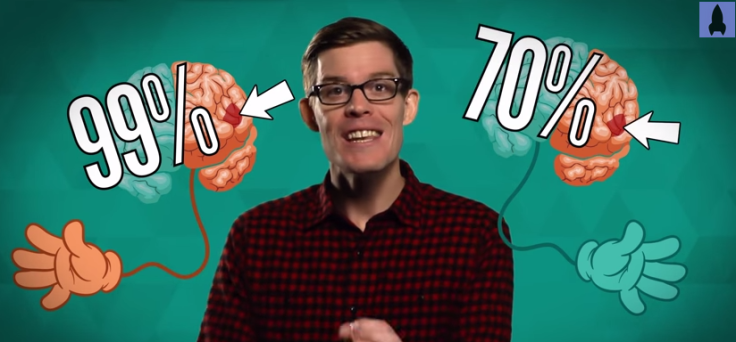Gene That Causes People To Be Left-Handed Identified

More than 10 percent of the human population is left-handed but scientists until now were at a loss as to the genetic variations that cause this handedness.
Now, a new study conducted by scientists from the University of Oxford and published in the journal, Brain, has become the first to identify which genetic variants separate lefties from righties. The research also suggests a potential correlation between left-handedness and superior verbal skills.
The study saw researchers investigate the DNA of some 400,000 people. Included in this number were 38,332 left-handers. The data came from U.K. Biobank, a database comprising the health information of volunteers across the United Kingdom.
After analyzing brain imaging from 10,000 participants, researchers found the genetic variants related to left-handedness were associated with differences in the brain’s white matter tracts. More specifically, these tracts were those connecting the areas of the brain associated with language.
Researchers also isolated four genetic regions associated with left-handedness. Three of these regions are linked to proteins influencing brain structure and development. The proteins were connected to microtubules, which are a component of a cell’s “scaffolding.”
This scaffolding or cytoskeleton determines the cell structure. It also determines the way cells operate. Previous research has illustrated the cytoskeleton’s influence on “left-right asymmetry” in other species.
“Many animals show left-right asymmetry in their development, such as snail shells coiling to the left or right,” Gwenaëlle Douaud, joint senior author of the study and a fellow at Oxford’s Wellcome Center for Integrative Neuroimaging, said.
Douaud also said the research indicates that in left-handed people, “the left and right sides of the brain communicate in a more coordinated way.”
She noted left-handed people demonstrate “a higher synchronization of the natural oscillations of your brain, and these oscillations still happen when you are idle.” This synchronization occurs “precisely again in the brain regions dedicated to language.”
The study also revealed an association between the aspects of brain development linked to handedness and the likelihood of developing Parkinson’s disease or schizophrenia.
It’s long been known there are slightly more left-handers among patients with schizophrenia than the general population. On the other hand, there are slightly fewer left-handers with Parkinson’s disease compared to the general population.
The new research suggests these diseases, along with handedness, “are the product of fundamental differences in brain development, some of which is driven by genes,” according to Dominic Furniss, joint senior author alongside Douaud and a fellow at Oxford’s Nuffield Department of Orthopaedics, Rheumatology, and Musculoskeletal Science.

Published by Medicaldaily.com



























